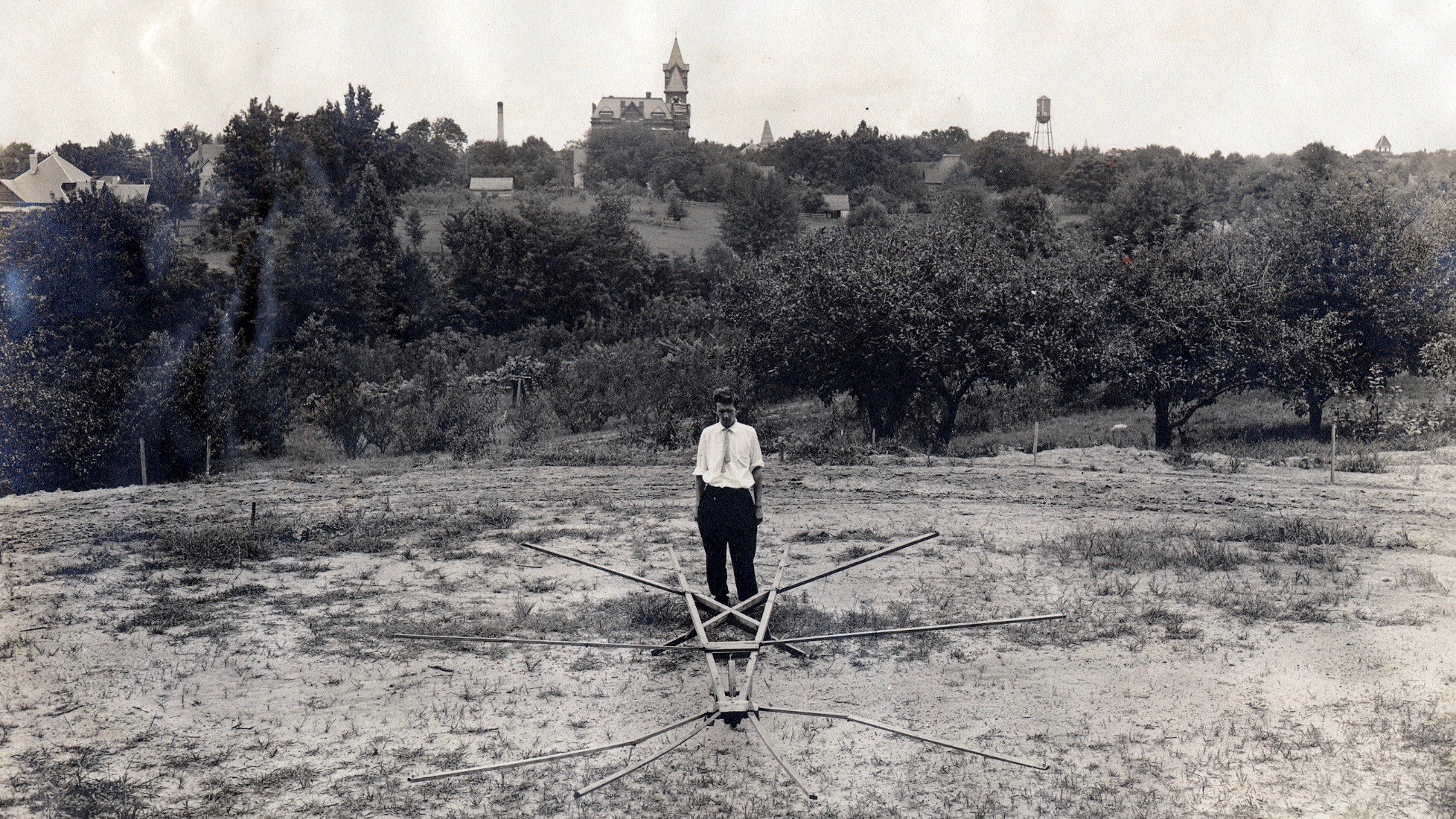API plays roll in the statewide cotton crisis
THROUGHOUT THE 2022-2023 ACADEMIC YEAR, THE COLLEGE OF AGRICULTURE IS CELEBRATING ITS 150TH ANNIVERSARY WITH CONTENT SHARED FROM ITS SPECIAL COLLECTOR’S EDITION OF THE SEASON, PUBLISHING IN 2023.
By Mike Jernigan
The first time I saw boll weevil,
He was sitting on a cotton square.
The next time I saw boll weevil,
He had his whole damn family there.
—Boll Weevil Blues, author and origin unknown
In 1892 — the very same year the Alabama A&M College football team played the University of Georgia in Atlanta’s Piedmont Park in its very first football game and three young women crossed the threshold of Samford Hall to become the Auburn college’s first female coeds — a far less heralded event quietly took place many miles away in Texas that would have a much more shocking effect on Alabama, Auburn and the Deep South as a whole.
For it was in that year also that the boll weevil, a debilitating insect pest that had moved ever northward through Mexico over previous decades, quietly crossed the Rio Grande and began to devour Lone Star farmers’ cotton crops. In the years around the turn of the century, Texas and most of the South was almost entirely reliant on cotton, which grew in sandy, marginal soils, was the traditional agricultural staple of the region since long before the Civil War and whose cultivation was all that stood between most Southern landowners and poor tenant farmers and a life of abject poverty.
The new threat had a relatively benign appearance, with the average yellowish-brown or black insect measuring in at about a quarter-inch long, including its long, curved snout, utilized to pierce cotton buds or fruit. In the spring, boll weevils emerged from a partially dormant state for the females to lay between 100 to 300 eggs in cotton bolls. Two to three weeks later, the larvae emerged inside their cotton boll home, devouring not only the seeds, but most of the surrounding cotton fibers as well. Even worse, as many as 10 generations of the pests might reproduce in a single spring season.
As the new century began, the boll weevil continued its inexorable American march, spreading north and east to fan out across the densely packed cotton fields of Arkansas, Louisiana, Mississippi, and, by 1909, Alabama. That year, the first evidence of crop damage was found in the far southern fields of Mobile and Baldwin Counties. By 1917, the insect had cotton patches across the entire state under siege.
Under pressure from losses to the weevil, cotton planting in Alabama that year declined by more than one million acres. In 1914, the state had recorded its largest cotton crop ever, in excess of 1.7 million bales.Three years later that output had plummeted to 515,000bales—a 70 percent drop. The devastation to the state’s cotton economy was worst in the southern counties, where warmer weather allowed the weevil a longer reproductive cycle. By 1918, even with the sharp increase in cotton prices due to demand brought on by the First World War, Alabama’s totally cotton-dependent agricultural economy was on the brink of collapse.
As they watched their livelihoods literally wither and die, farmers fought back however they could. Some picked weevil infested bolls off by hand, while others tried kerosene, carbolic acid, or other chemicals to combat the pests. Homemade mechanical devices, as well as burning off the woods near the fields to kill hibernating weevils, were also tried, but while they might make a temporary dent in weevil populations, the insects reproduced so rapidly and in such overwhelming numbers that it seemed nothing could slow the destruction.
But by a stroke of fortuitous timing, Alabama was not totally defenseless. True to its land-grant mission, Alabama Polytechnic Institute (Alabama A&M had changed its name in 1899) was part of a growing national trend in the early years of the 20th century to apply scientific principles to agricultural problems.As early as 1904, the Alabama Agricultural Experiment Station located at Auburn had issued bulletins warning about the boll weevil and suggesting ways to fight them when they arrived.
The first farmer demonstration agents —the forerunners of modern county agents —had been hired by API in 1906 to share best practices pioneered by national and university research with the state’s farming community. In 1914, the federal Smith-Lever Act had created the Cooperative Extension Service, which provided increased organization and funding for the dissemination of scientifically backed farming practices throughout the state.
Yet most Alabama farmers, bound by generations of tradition and suspicion of “new-fangled” ideas, continued to plant cotton, sowing the seeds of their own demise as crop after crop failed due to weevils. By 1918, the situation statewide was so dire it seemed almost hopeless, but without most farmers realizing it, a silver-lining to the crisis had already begun to emerge.
For one thing, county agents had already started to recommend the employment of a more effective insecticide —calcium arsenate —which would continued to be used with some success until more effective chemicals were introduced in the 1940s. But even more importantly, API extension agents began to have some success preaching crop rotation and diversification, which reduced reliance on cotton and helped improve exhausted soils.
Nowhere was this more true than in Coffee County in southeastern Alabama, which had seen its first boll weevils arrive in spring 1915. The area farmers were hit hard, with the cotton crop falling from 30,000 to 10,000 bales in only one year. The county agent there, John Pittman, had earlier traveled to Texas to study the boll weevil problem firsthand, and he had come away convinced that switching from cotton to other crops was the best solution. The question was, what crop? In the era before large-scale fertilization became the norm, cotton grew well in poor soils where most other cash crops would not.
Shortly after the 1915 season ended, Pittman and a like-minded banker and cotton merchant from the Coffee County seat of Enterprise, H.M. Sessions, traveled to Virginia and North Carolina —states where the cotton culture wasn’t so entrenched —to look at alternatives. They soon decided peanuts were a crop that could fill the growing void in Coffee County cotton fields and returned with enough seeds to test their theory.
A local farmer indebted to Sessions’ bank agreed to be their guinea pig, planting his entire 125-acre farm in peanuts. He made an $8,000 windfall from his new crop, and other farmers across the county quickly took notice. After another disastrous cotton season in 1916, Pittman and Sessions had as many converts to peanuts as they could handle. Soon, cotton was no longer king in Coffee County. In 1917, the are a produced one million bushels of peanuts.
In another instance of fortuitous timing, the profitability of farming peanuts was increasing exponentially thanks to the growing popularity of peanut butter —first introduced to American consumers at the World’s Fair in St. Louis in 1904—and also in part to the efforts of George Washington Carver, director of the Agriculture Department at Tuskegee Institute, whose early research in to the numerous alternative uses for peanuts had been first published in 1916.
By 1919, Coffee County was producing more peanuts than any other county in America and crop diversification was increasingly taking root across Alabama and the rest of the boll weevil-ravaged South. In fact, one county resident, prominent Enterprise businessman Roscoe Fleming, was so grateful for the economic boom rising from the ruins of the cotton fields that he paid $1,795 for a statue in the city square honoring the Boll Weevil for weaning the county off its total reliance on cotton. That statue remains today as the only such monument in the world dedicated to an insect—and a crop-destroying pest at that.
In the end, the crop rotation concepts, early insecticides and encouragement to grow peanuts and other crops in lieu of cotton that were all encouraged by research at API and county agents from the fledgling Cooperative Extension Service based in Auburn, along with the timely peanut research of Carver at Tuskegee, launched Alabama agriculture in new directions.
The success of those recommendations —and the research behind them—also went a long way towards validating the new scientific methods of improving agriculture championed by the agricultural leaders at API in the eyes of previously skeptical Alabama farmers. Today, the Wiregrass region around Enterprise remains one of the nation’s largest peanut-producing areas and the boll weevil no longer plagues southern cotton. It is a lasting testament to that success.





